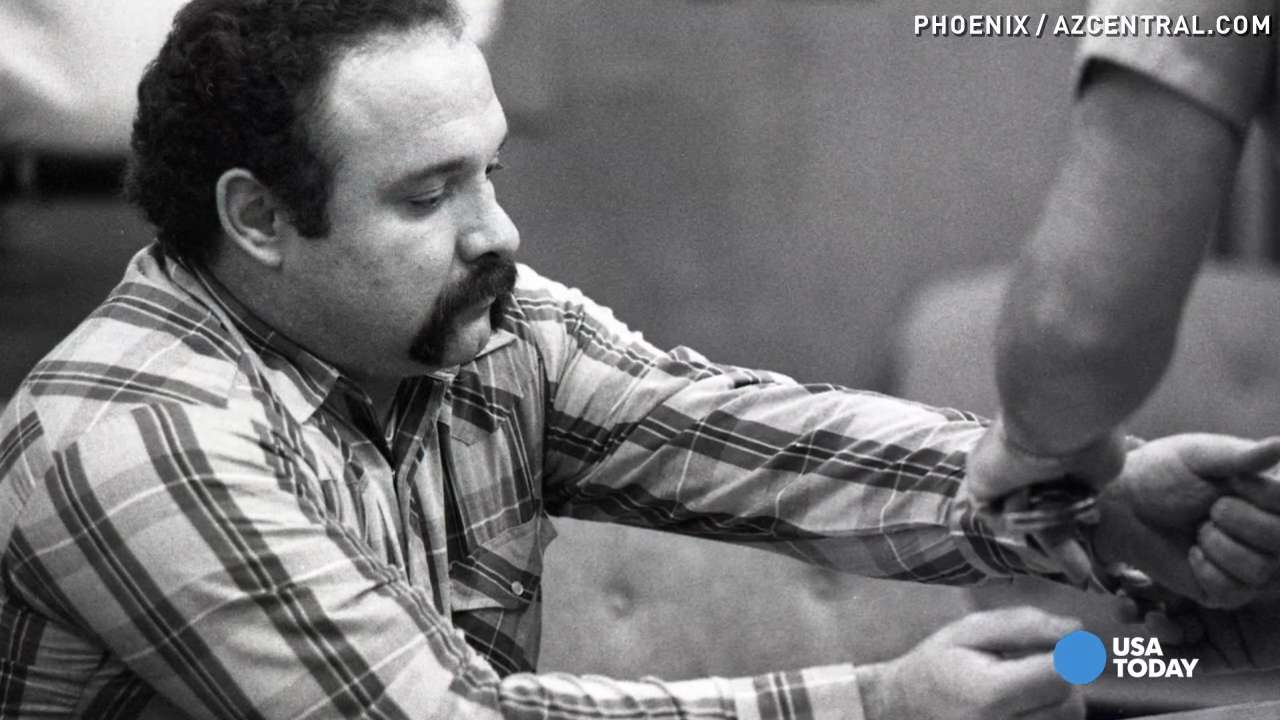Arizona to change drugs used for executions

PHOENIX — Five months after Arizona death-row inmate Joseph Wood gasped and snored for nearly two hours on an execution gurney before dying, a review of the incident released Monday found no explanation of what went wrong.
But, nevertheless, the state has decided to change the drugs used for executions.
According to a letter from Department of Corrections Director Charles Ryan to Arizona Gov. Jan Brewer, Ryan said he would no longer use the combination of midazolam, a Valium-like drug, and hydromorphone, a painkiller. He said he would retain the option of using a single-drug method using either sodium thiopental or pentobarbital — drugs that were used effectively in executions until their manufacturers made them unavailable for that use.
Ryan also wants to add the option of using a three-drug succession that starts with midazolam to sedate the inmate, then uses a paralytic drug to render the inmate motionless and adds potassium chloride to stop the heart. Until 2010, when it became unavailable for executions, thiopental was used as the first of a three-drug protocol. Ryan said he would like to reintroduce that option in the event his department can obtain thiopental.
Wood, 55, was sentenced to death for killing his ex-girlfriend and her father in Tucson in 1989. In the weeks before his July 23 execution, Wood's attorneys petitioned the court to compel more information about midazolam, which had been used in at least two other flawed executions in prior months.
The U.S. Supreme Court lifted a stay of execution that would have forced the state to provide that information. Then witnesses watched as Wood's execution took 10 times longer than usual. Executioners injected Wood with 15 ostensibly lethal doses of a cocktail of midazolam and hydromorphone, before he finally died.
Execution by lethal injection usually takes about 10 minutes.
Ryan ordered an independent review.
The Arizona Department of Corrections issued a news release saying the execution by lethal injection "was not botched" as many had suggested after the two-hour execution.
"The report is clear that the execution of inmate Wood was handled in accordance with all department procedures, which, as the report states, either meet or exceed national standards. It was done appropriately and with the utmost professionalism," Ryan said in a statement.
One of Wood's attorneys questioned the report.
"The Arizona execution protocol explicitly stated that a prisoner would be executed using 50 milligrams of hydromorphone and 50 milligrams of midazolam," said Dale Baich. "The report released today does not answer the question of why the experimental drug protocol did not work as promised."
The 50-page report, released Monday afternoon, mostly describes the Arizona protocol and compares it with those of other states identified only as States B through F, then concludes that the Arizona procedures "equaled or surpassed the provisions contained in the protocol standards reviewed from the other jurisdictions," and that "the training regime that was documented for all team members could serve as national standards for other systems."
The report, conducted by former corrections directors and experts, also details the prescribed procedures and the logs showing how the Wood execution was carried out.
But when it comes to explaining what went wrong, the report refers to the doctor who was the execution-team leader, who "felt" that Wood's heavy breathing was "reflexive" and not an indication of suffering. The doctor did not know why the dosage did not work.
The report also quotes Pima County Medical Examiner Gregory Hess as saying that gasps and snorts are "normal bodily responses to dying." He also did not know why the dosage did not work as expected. He also noted that there was nothing unusual about Wood's autopsy.
A correctional-health expert who was not identified by name also said he could not explain why the execution took so long. The independent expert suggested using midazolam in a three-drug protocol similar to that used in a botched execution in Oklahoma.
Baich said, "The state should release all of the documentation and witness reports that went into this review."
Wood's attorneys have already filed suit in federal court over the execution and the corrections department's reluctance to disclose information. That suit was stayed in November pending the release of Monday's report, which, according to court filings, was supposed to be released in mid-November.
A joint stipulation between the state and Wood's attorneys states that Ryan cannot change the protocol without notifying the plaintiffs, at which point the litigation will become active again. The state agreed not to seek warrants to execute other inmates until the judge ruled.
A separate lawsuit filed by The Arizona Republic and a coalition of other media outlets demands more transparency in how executions are carried out.
Arizona has put on hold all executions pending the outcome of a lawsuit stemming from Wood's execution. The state has put 37 inmates to death since capital punishment resumed in 1992 and has about 120 inmates on death row.
Meanwhile, a federal judge ruled Monday that Oklahoma's lethal injection protocols are constitutional, and said the state can proceed with the scheduled executions of four death row inmates early next year.
Contributing: The Associated Press.